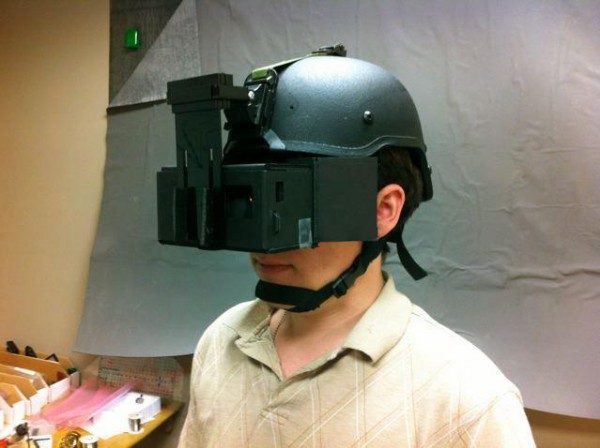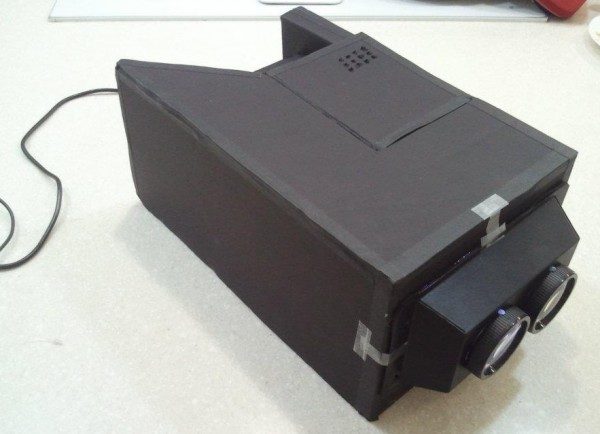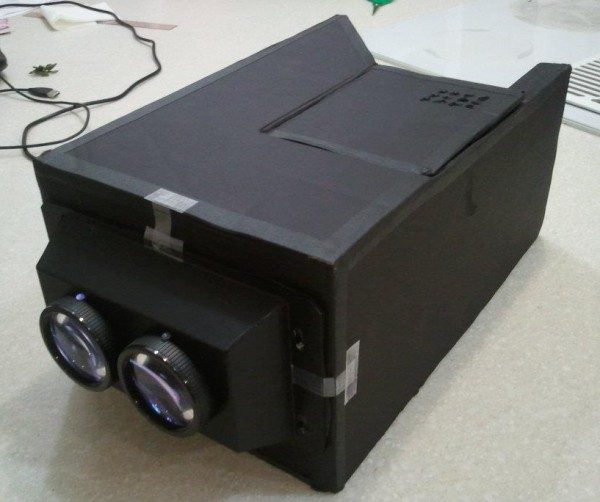Palmer Luckey has been a virtual reality junkie since before the Oculus Rift. He claims to have the largest private collection of head mounted displays in the world, totaling some 43 units. And as the Rift has shown us, Luckey doesn’t just collect, he also builds. As such, he’s built a number of prototypes that push the field of view far beyond what the Rift will deliver — among them 120 degree and 270 degree HMDs.
For those unfamiliar, ‘field of view’ defines how much of the user’s vision is taken up by a display. Humans have a horizontal FoV of around 180 degrees. For a display to completely take over your view it would need to have a 180 degree FoV (or beyond). See more VR terms in my glossary. Higher fields of view are linked closely with the immersiveness of a head mounted display.
The Rift didn’t break any ground with a 90 degree horizontal field of view. In fact, there have been head mounted displays with larger fields of view for quite some time. The magic of the Oculus Rift is the combination of a fairly high FoV, low weight, low cost, and low latency latency in a single device. But what happens when you can disregard a few of those characteristics and really work at the pushing the field of view? Luckey gives us the answer with 120 degree and 270 degree prototypes.
 This is Luckey’s 120 degree FoV prototype which he shared on the MTBS3D forums back in June before the Oculus Rift really took off. As you can see, it’s massive. He lists the specs as follows:
This is Luckey’s 120 degree FoV prototype which he shared on the MTBS3D forums back in June before the Oculus Rift really took off. As you can see, it’s massive. He lists the specs as follows:
- 120 degree horizontal FoV
- 1280×720 per eye
- Dual HDMI inputs
- Super tight pixel pitch, no perceivable pixels
- Minimal distortion optics
‘Head mounted display’ might not even be an appropriate term for such a beast — Luckey said this one was so heavy that we was going to mount it on a spring balanced boom to make it easy to look through.

Then there’s the 270 degree FoV prototype which pushes the field of view beyond that of regular human vision. Going to 270 degrees means that the user’s entire 180 degree FoV will be taken up by the display and then some. The display adds on an additional 90 degrees outside of the user’s field of view which is visible if the user decides to look around the display. Luckey says that even if you turn your eyes all the way to one side you still can’t see the edges of the screen. Talk about immersion!

Weight and bulk aren’t the only issues with Luckey’s 270 degree prototype; it’s even difficult to get computer software to correctly render such a wide FoV. Luckey says that four separate views of the digital scene need to be rendered then fused together to create a scene which looks correct through the 270 degree prototype. Not only is there no widespread driver support for such rendering, the demand on the computer to accomplish such a task is prohibitively high. For stereoscopic 3D display, a computer already needs to render twice as many frames as non-3D. To play a game in 3D at a smooth 30 frames per second the computer needs to render a separate frame for each eye, essentially meaning it must be capable of rendering at 60 FPS. Now add the four independent views necessary to achieve a 270 degree FoV — to each eye. At this point the computer must be capable of rending at 300 FPS which is not a trivial task.
All of this bodes well for the upcoming consumer version of the Rift (AKA the Oculus Rift 2.0) which Luckey hopes will be able to go beyond the 90 degree FoV of the developer version. I think it’s safe to say that 270 degrees is out of the question on rendering alone but 120 degrees might just be a possibility.








